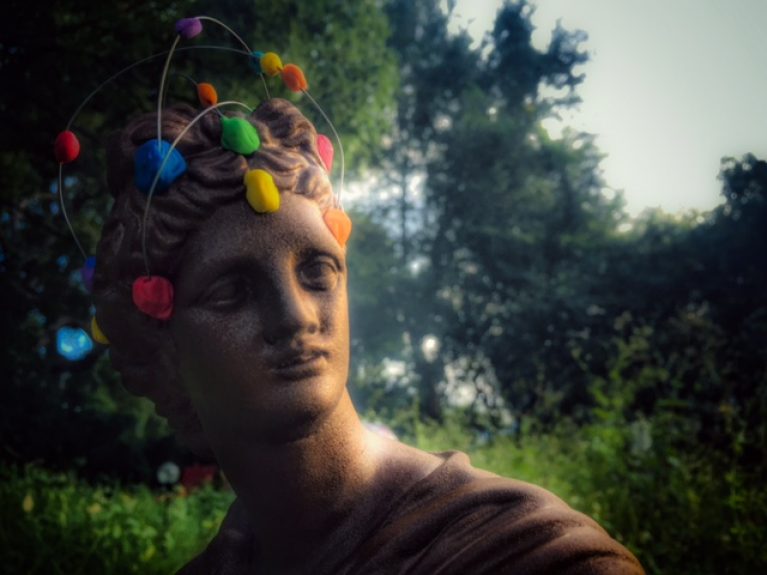“What’s this Font?” My co-worker held up a battered bit of printing.
With a piercing glance and no hesitation, I replied, “Caslon.”
My co-worker rifled through a font book and announced, “You’re right.”
I knew this because, I built up in my head a vast library of fonts and layout designs over the course of over twenty-five years. Equations and variables for solving the problem of the blank page. The years of study, repetition and use of this information, I have what some may perceive as a gift.
Secret to this? Rote learning, study and creativity were the fundamental building blocks useful in my work.
But what do you do when you want to change the direction of your life?
I read the most fascinating article from Nautilus Magazine at nautil.us titled, “How I Rewired My Brain to Become Fluent in Math” by Barbara Oakley published October 2, 2014 found here http://nautil.us/issue/17/big-bangs/how-i-rewired-my-brain-to-become-fluent-in-math?utm_source=frontpage&utm_medium=mview&utm_campaign=how-i-rewired-my-brain-to-become-fluent-in-math#comm
Barbara Oakley an Engineering professor at Oakland University, Rochester, Michigan wrote in detail on how she went from being fluent in Russian to becoming an engineer. Years of failing at elementary and high school math. Barbara went into the military and became a linguist. After years of utilizing this expertise, she decided at the age of 27 to make a great leap into the world of higher math. The problem? She admitted to being rubbish at elementary and high school math. she called herself a mathphobe. She started with the basics starting and a class in uncredited algebra. This was hard work. She seemed to have approached the work differently, she used experience as a linguist to learn the language of math. How?
The spoil and boil version. Repetition and frequency in performing equations gave, her understanding to the math she was learning. Her article tasks what many educators teach. Which is, understanding leads to frequency. She tells of students who believe they “understood” the lecture only to fail at performing the math.
Recently, a reader of this article sent me his in depth article titled ” 12 Evidence-Based Tips to Overcome Math Anxiety by Max Panych of USA Test prep have a great number of solutions overcoming anxiety when faced with math learning. Though it is geared for younger students and their parents, I see a number of tips that older students or adult learners can utilize. Especially if many adult learners are dipping their toe in to coding or career retraining. For parents and educators there advice on figuring out if their child or student has anxiety over maths.
Foreign language is loaded with variables such as past and present, male, female and neuter tenses. All of which needs to be known for one to be fluent. All of her practice in the new world of math, and utilizing what she learned from linguistic study allowed her to rewired her brain to deal with variables found in math.
The article adds a reference to Herbert Simen’s research on chunk learning. Chunk learning is the concept of breaking information in to parts to make it easier to recall. The article points to his work on world chess masters who memorize thousands of possible moves. This is similar to my stored knowledge of fonts and layout ideas. Serif, san serif, headline fonts.
Three years ago, I walked away from the world of graphic design. I had suffered an extreme emotional trauma that, in effect, felt like my brain and other parts were broken. Curiosity and a very strong drive to change, made delve into talk therapy, research books and articles pertaining to neuroscience. All this so I could rewire my brain and move through my trauma.
To start this process I had in my home library (who does not have one?) and “Proust was a Neuroscientist” by Jonah Lehrer. In this book, the author points to 19th and 20th century authors and artists who understood the workings of the brain before the science proved it. This book formed my foundation and road map for my need to explore and learn the workings of my own mind. A particular chapter struck home, it was about 19th century author George Eliot, the writer of “Middlemarch”. She read many of science and treatises that were being published at a break neck speed in the 19th century. She came to believe hat the brain rewrote itself daily. We in the 20th and 21st century believed the brain did not create new cells. Science had proved this to be incorrect. Her belief allowed me to move forward and break the fear of failure because, I could try again. Eventually, I honed skills through repetition and frequency that I did not believe I had prior.
An excellent example of this rewiring experiment was my attempt at double entry bookkeeping. This was for a venture I was involved in last year. I needed to speak my highly specialized CPAs (http://rosshughescpa.com). I did not speak their language. I did the best thing I could do, I merged art and math. I found a video about the life of a 15th century monk named Luca Patchiola. He taught Leonardo DaVinci the math of perspective. From that I found an English translation of his treatise on Double Entry bookkeep. A form of math that has not changed in 500 years. I then spent time going over and over the the text and the entries and math specific to this general ledger to gain understanding. My questions to my CPAs though rudimentary, allowed me to gain knowledge into this new field of knowledge.
Make the leap of faith to change. Have the courage to practice with patience and frequency.
Stay Curious, Rox
Photography by Roxanne Henkle – 2016


